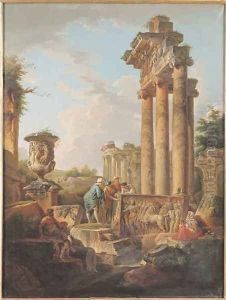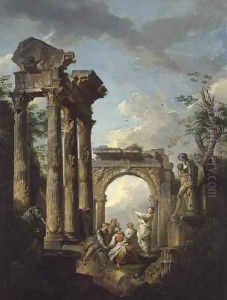Giovanni Maria Griffoni Paintings
Giovanni Maria Griffoni was an Italian artist from the Renaissance period, born in the middle of the 15th century, specifically in 1451. Little is known about his exact date of death, which is not uncommon for artists of that era, whose lives were not always well-documented outside of their creative work.
Griffoni is often associated with the city of Bologna, where he was active and where his presence in the art scene is recorded. He was a contemporary of artists such as Francesco del Cossa and Ercole de' Roberti, who were also prominent figures in the Bolognese School, a group of painters who were known for their distinctive style that combined Northern European influences with Italian artistic traditions.
Not much is known about Griffoni's early life or training. It is presumed that he learned his craft in the fertile artistic environment of Bologna, which at the time was a center for innovative painting techniques and had a thriving community of artists and patrons. Griffoni's works are characterized by their detailed execution and vibrant colors, traits that were typical of the Bolognese School.
One of the most significant contributions attributed to Griffoni is his work on the Griffoni Polyptych, a large multi-panel altarpiece for the Basilica of San Petronio in Bologna. This impressive work was a collaborative effort that also featured panels painted by Francesco del Cossa and Ercole de' Roberti. Unfortunately, the altarpiece was dismantled in the 18th century, and its panels are now dispersed across various museums.
The exact details of Griffoni's later life and career remain obscure, and the lack of information has led to difficulties in attributing works to him with certainty. His artistic legacy, however, is appreciated through the panels that survive, which showcase the elaborate style and rich narrative detail that were hallmarks of the Bolognese School during the Italian Renaissance.

